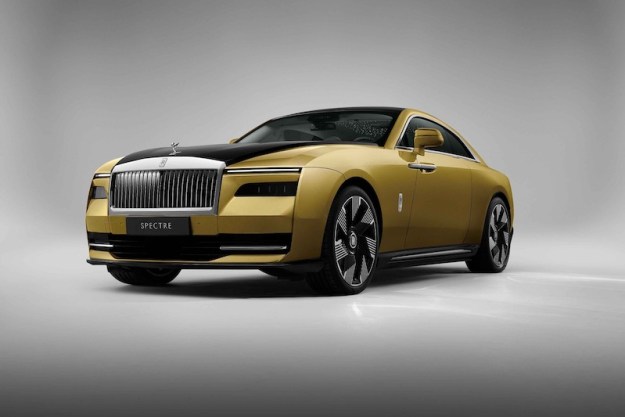Bosch wants to blow up your electric car one small explosion at a time after you crash it. This sounds violent — almost unnecessarily so — but it could help save your life if you’re involved in an accident behind the wheel of an EV.
The German research firm explained hybrid and electric cars pose different threats to passengers and first responders than gasoline- or diesel-burning vehicles involved in a similar accident. The high-voltage system they rely on to move is connected by wires which can get severed by damaged sheet metal, for example. Cut wires can transfer current to the car’s body, rather than channeling it to the motor that drives the wheels.
Bosch’s solution to this problem relies on semiconductors strategically integrated into the electrical system and digitally linked to the airbag sensors. The sensors trigger the airbags if they detect an impact, and they simultaneously tell the semiconductors to blow out a cable connection by setting off a mini-explosion that guillotines high-voltages cables and isolates the cut end. This ensures the current stays in the battery instead of zapping, say, the steering column.
Integrating Bosch’s semiconductors into a modern hybrid or electric car is relatively easy. They’re about the size of a fingernail, and they weigh a few ounces, so they can be installed just about anywhere, even in a car not designed with this technology in mind. Integrating them into the car’s electronic brain is fairly straightforward, too.
Bosch believes this explosive technology could save lives as hybrid and electric cars become increasingly common on the world’s roads. Emergency rescue crews agree.
“Faced with the growing number of electric vehicles that could potentially be involved in collisions, such systems are absolutely essential if we are to fulfill our mission of helping and rescuing victims of road accidents as rapidly and safely as possible,” opined Karl-Heinz Knorr, the vice president of Germany’s firefighter association (DFV).
Bosch’s role in the automotive industry is to develop technology, not to build the cars that benefit from. When and where its explosion-based safety device reaches the market depends largely on the automakers racing to bring EVs to the market.
Editors' Recommendations
- Fake engine noises in electric cars need to die
- The fastest electric cars, ranked by 0-60 mph acceleration
- What are the different types of electric car chargers?
- How much does an electric car battery cost?
- VW previews its next electric car in trippy camouflaged form




